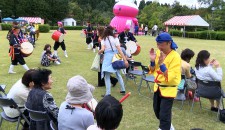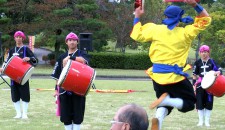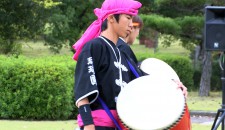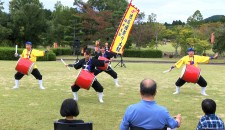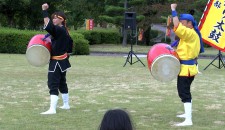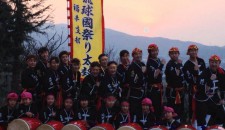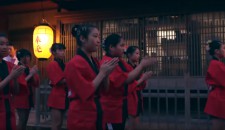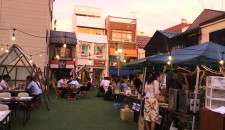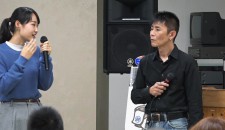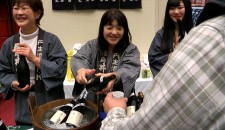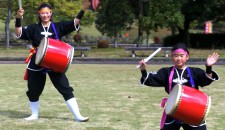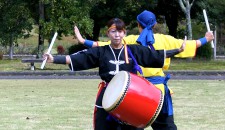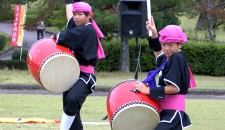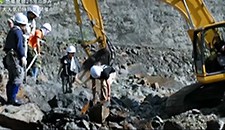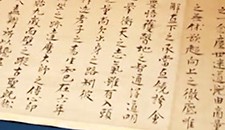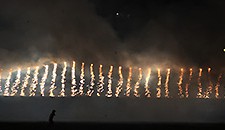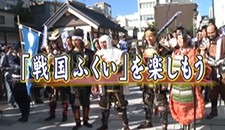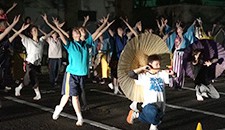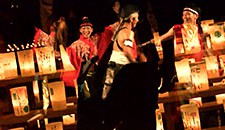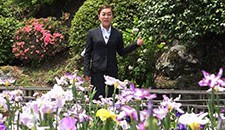Okinawa's traditional performing art: Eisa "Shinkanucha" by Ryukyukoku Matsuri Daiko Fukui
2018.12.27
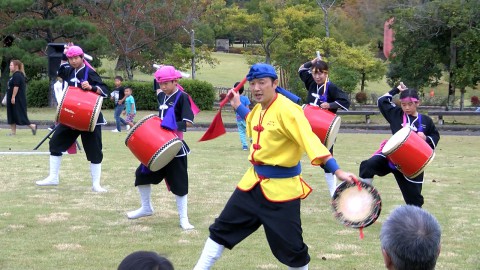
On October 7th (Sat), 2017, the Ryukyukoku Matsuri Daiko Fukui performed Eisa at Echizen Autumn Pottery Festival at Echizen Pottery Village in Echizen Town, Fukui Prefecture. Here is one with a song called "Shinkanucha".
”Shinkanucha" means "fellows" in Okinawan language. Three artists participated in writing the song, and one of them, a former member of THE BOOM, Kazufumi Miyazawa says: "Even if you don't have Okinawan blood, if you love Okinawa, live in Okinawa and try to create a prosperous future for Okinawa, you are "shinkanucha" of Okinawa. I want to sing this song and dance together with immigrants from Okinawa around the world and people inside and outside Okinawa, and want to become one with them as "shinkanucha"."
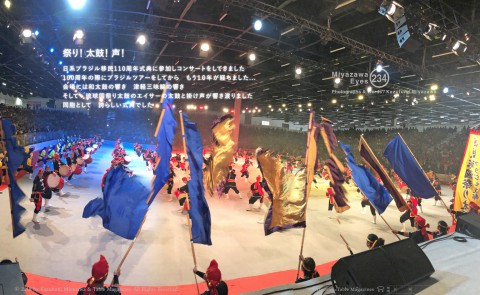
Miyazawa held a concert at the 110th anniversary ceremony of Japanese immigrants to Brazil held in July, 2018 in Sao Paulo. Ryukyukoku Matsuri Daiko Brazil also
participated in it.
(The photo is from Kazufumi Miyazawa Official Web)
Eisa is one of Okinawa's traditional performing arts, which corresponds to bon dance in Japan's mainland. Youth groups in each district have each style. They parade while dancing during the Bon festival. Although there are various theories on the origin of the Eisa, it is said that a high priest in Buddhism introduced a dance with a prayer to Buddha around 1600, and it developed into the Eisa.
Ryukyukoku Matsuri Daiko is a drumming group, whose performance is based on Okinawa's traditional performing art Eisa, featuring its own choreography adopted an original style of karate, and the dynamic drumstick-work. Now they are representative of Okinawa and are very popular with young people. The group was established by young people of Okinawa City in 1982 and since then, it has beaten out "appreciation for predecessors" that has been valued in Okinawa.
This year marks the 35th year since it was established, their branches expanded to other countries. Now it has 49 branches in Japan, 27 branches in other six countries and the number of members exceeded 2,500. (as of August 2018) Their activities expand on a world scale.


